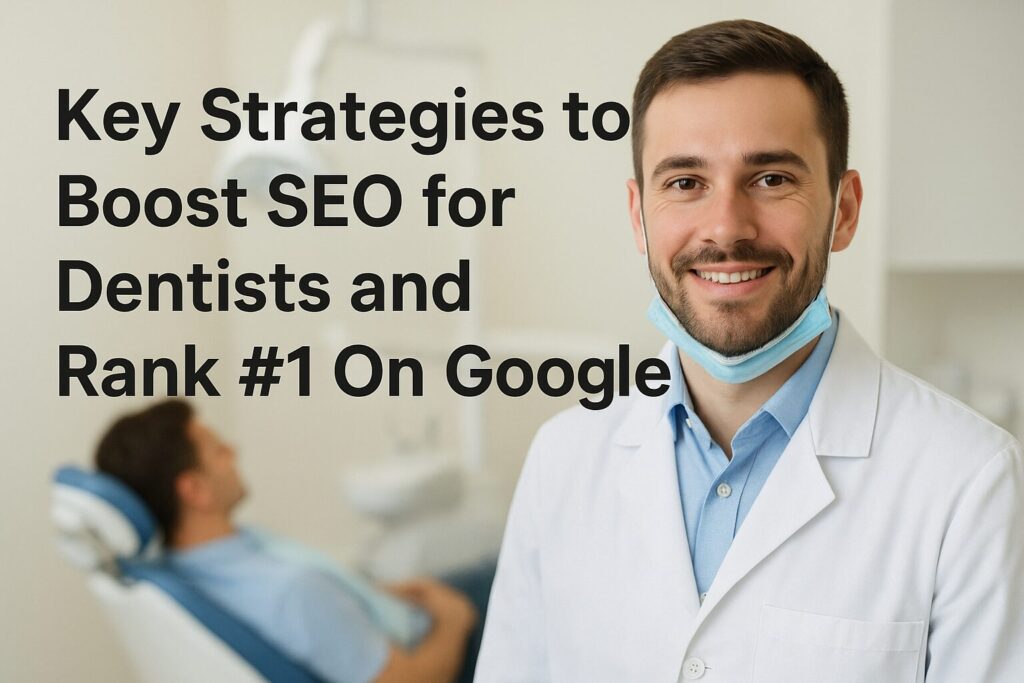The worst healthcare SEO mistakes hurting your rankings are neglecting technical SEO, creating low-quality content, skipping local search optimization, and failing to monitor how well you’re currently doing. Having slow page speed, no mobile optimization, no a schema markup or even doing keyword stuffing for your medical practice can surely not give you online visibility. The good news: All of these can be easily resolved — And if you fix them, they all have the potential to draw more walk-in patients your way.
Technical SEO and Site Performance Problems
Your healthcare website needs to be quick, responsive (mobile-friendly), and accessible. When these fundamentals are neglected, rankings can slide in a hurry.
1. Slow Page Speed
Pages load slowly when large image or video files and messy code are to blame. Even a few seconds of downtime can cause higher bounce rates and drive patients away before they even get to your services.
2. Mobile Optimization
Today, almost everyone looks up health care information on a phone. If you don’t, users become frustrated, and Google knows that your website isn’t as user-friendly.
3, Neglected Technical Maintenance
Broken Links, Too Many Broken Plugins, and Unsecure (Http://) Connections.s All of these do not look good for user experience or credibility. Frequent site audits help to keep your site architecture clean and healthy.
4. Missing Schema Markup
Click-through rates and local search ranking are enhanced by ensuring that the search engines understand your content (such as your clinic’s name, doctors and services) — achieved through structured data (schema).
Quick Fix: Optimize Images, test using Google PageSpeed Insights, enable SSL, and add healthcare-specific schema markup such as MedicalClinic or Physician.
6 Content Errors That Frustrate Audiences & Sabotage Credibility (& How To Avoid Them)
Your content represents your expertise. Thin or weak content sends the wrong message to Google and your patients.
1. Keyword Stuffing
No, you don’t help yourself by using “dentist in Karachi” 20 times in a single paragraph — that hurts your rankings. Instead, use natural, patient-focused language.
2. Low-Quality or Duplicate Content
Plagiarised or AI-text-generating-writing-synthesising bastards, or out of date, will crush your (license before licence) if you are in the UK)/compute! Patients who find your website are searching for reliable and factual medical information, so concentrate on original and helpful content that answers actual questions.
3. Ignoring Internal Linking
When blog posts and service pages aren’t linked together, you lose 81% of the navigation flow and “link equity” across your website. Add relevant internal links such as from blogs → services → booking page.
4. Unoptimized Images & Meta Tags
Lack of alt text is a missed opportunity or overly generic meta descriptions that reduce search visibility. You should have properly filled meta titles with short and catchy descriptions to improve the CTR for each page.
Quick Fix: Create new, fleshed-out, human-centered content; add internal links; and tag images descriptively with the mention of the medical service (e.g., “eye exam in Sydney clinic”).
Local SEO Errors As A Medical Practice That You Can’t Afford
Healthcare SEO is highly location-based. Your patients are local to you, and they’re searching for clinics nearby; not covering off that low hanging fruit with local SEO is setting yourself up for a loss.
1. Unclaimed Google Business Profile
“But there are many practices that either don’t claim or update their Google Business Profile.” Without this data, your clinic will not be visible in the map pack or voice searches (e.g., “ENT clinic near me”).
2. Inconsistent NAP (Name, Address, Phone)
Search engines also get tripped up by minor differences (such as “St.” versus “Street”). Make sure your NAP is consistent across all platforms — website, directories, and social media.
3. Lack of Local Content
One-size-fits-all pieces don’t resonate with local patients. Create pages about your areas, nearby health events, and community contributions to attach relevance.
4. No Review or Reputation Strategy
Trust and ranking signals. Patient reviews build trust & the more records and files with positive feedback can help you to rank better. Respond to positive and negative feedback to demonstrate validity.
Quick Fix: Own your Google Business Profile, have consistent citations, and write local blogs like “5 Skin Care Tips from Our Lahore Dermatology Clinic.”
Backlink & Analytics Mistakes
Most of the healthcare SEO marketers neglect link building, while some overdo it.
1. Buying Low-Quality Backlinks
Black-hat SEO practices, like purchasing backlinks from unrelated websites, can lead to penalties. Instead, earn backlinks from reputable healthcare directories, universities, or professional associations.
2. Not Tracking Performance
If you don’t have analytics, you can’t measure success. Track site traffic, conversions, and keyword performance with Google Analytics and Google Search Console.
Quick Fix: Look for high-authority backlinks and measure KPIs such as organic clicks, appointment forms and call conversions each month.
User experience (UX)
A latent ranking factor. Nailing down every aspect of the user experience was once a task reserved for those obsessed with perfection, or like Rankbrain’s magic tweaks, brutally coughed to power by reading and smelling within the confines of focus groups.
Society has trained us to seek instant gratification, and if the user experience takes a while for the users, they’re out of here — higher bounce rates, lower conversions.
1. Cluttered Layout & Small Fonts
Readers will be put off by big blocks of text or a lack of visual interest. Keep it in small paragraphs with lots of white space.
2. Hard-to-Find Contact Information
If and when a patient can’t easily locate your phone number or appointment button, they will bounce. Put CTAs up high, with buttons at the top and bottom of every page.
3. Accessibility Oversight
ADA-compliant websites serve every patient — even those with vision or hearing problems aside from blind or deaf patients — and in many cases, perform better in search results.
Quick Fix: Streamline your design, make it more readable, add clear CTAs, and ensure accessibility (per WCAG 2.1).
Trust-Building via E-E-A-T
This is where most of the others fall. Google Wants Experience, Expertise, Authority, and Trust (E-A-T) — Especially for Healthcare Sites.
Demonstrate your medical team’s qualifications, provide author bylines, link to credible medical sources, and keep the content fresh. Include patient stories, FAQs, and clear contact information — these are all credibility indicators that will help you perform better organically.
Quick Fix: Include a “Meet the Doctors” page, list certifications, and link out to reputable health authorities.
Your SEO To Do List for Improved Search Rank
- Audit technical SEO monthly for broken links, page speed, and schema.
- Update current pages to be patient-focused and keyword-friendly.
- Create Strong Local Signals. Create relevance in your area with a strong NAP, Google Business Profile, and location pages.
- Monitor your tracker performances — concentrate on those calls, appointments, and conversion rate.
- Establish authority with solid backlinks, refreshed medical content, and good UX.
Final Thoughts
And, healthcare SEO success isn’t about chasing algorithms — it’s all about a trusted, fast, and patient-friendly experience! When your site is technically sound and conveys accurate + compassionate content in a localized manner, Google rewards you by ranking higher and gaining more patients visiting.
By steering clear of these prevalent SEO missteps — and focusing on experience, expertise, and local relevance — your medical practice can earn long-term visibility and trust online.





